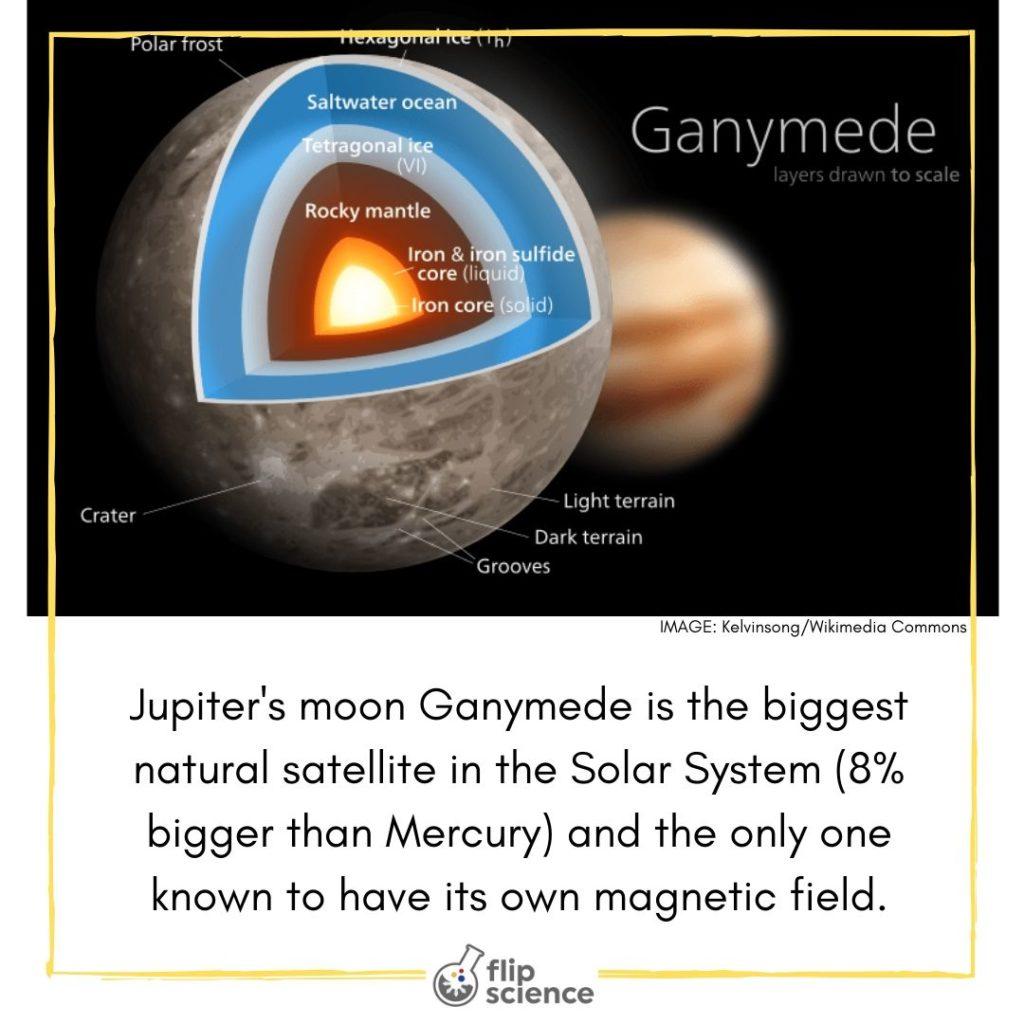FlipFact of the Day: On January 7, 1610, Galileo Galilei made the first recorded observation of Jupiter’s four largest satellites: Io, Europa, Ganymede, and Callisto. Of the four Galilean moons, Ganymede is the largest; with a diameter of 5252.4 kilometers, it’s slightly bigger than Mercury. However, due to its composition of water ice and silicate rock, it is only about half as massive as the Solar System’s smallest planet.
Still remember your 5th-grade science classes? Test your knowledge and see if you still remember these facts and fundamental concepts in human anatomy, biology, botany, and other branches of science. Click here to try the “Are You Smarter Than A Pinoy Fifth-Grader” Challenge.
Follow the hashtag #FlipFacts on Facebook and Instagram to get your daily dose of science trivia!
Image: NASA/JPL (true color)
References
- Chamberlain, V. D. (1981). “Astronomical content of American Plains Indian winter counts”. Bulletin of the Astronomical Society. 13: 793.
- https://www.universetoday.com/15509/ganymede/
- https://solarsystem.nasa.gov/moons/jupiter-moons/ganymede/in-depth/
- https://www.space.com/16440-ganymede-facts-about-jupiters-largest-moon.html
Author: Mikael Angelo Francisco
Bitten by the science writing bug, Mikael has years of writing and editorial experience under his belt. As the editor-in-chief of FlipScience, Mikael has sworn to help make science more fun and interesting for geeky readers and casual audiences alike.







